On June 30, 2022, Google officially sunset expanded text ads (ETAs), making responsive search ads (RSAs) the new default search ad format. While you can still run and collect data on ETAs, switching to RSAs has been highly encouraged as they make it easy to adapt your ads to a broader array of search queries.
RSAs allow you to run more headlines and descriptions than ETAs and test combinations of these headlines and descriptions to see which ones perform best (while ETAs require you to do this manually).
It’s another step in Google’s overall move toward more ad automation. We recommend that all marketers learn how to successfully create RSAs to fully utilize Google’s machine learning.
In this post, we’ll review what responsive search ads are and the best practices for writing them.
What Are Responsive Search Ads (RSAs)?
Responsive search ads (RSAs) are Google’s default search ad format. When someone searches a relevant query, Google shows your ad. Instead of involving one headline, two descriptions, and display and final URLs like with ETAs, RSAs require multiple headlines and descriptions.
How Do Google RSAs Work?
Google’s machine learning tests different combinations of your written headlines and descriptions to optimize ads that generate the most user engagement. Typically, Google will display three headlines and two descriptions for RSAs, but it could show less based on the device type or how many other results show on the SERP.
Benefits of RSAs
RSAs enable your ads to be more relevant to various search queries. Providing multiple headline and description options increases the chances of your ad resonating with users, regardless of their search intent.
Google’s machine learning algorithms work behind the scenes to test different headline and description combinations. This ongoing optimization helps identify the most effective ad variations, ultimately driving higher click-through rates and conversions.
Creating numerous static ads for different queries can be time-consuming. With RSAs, you can streamline the process by simultaneously inputting multiple headlines and descriptions. This saves time and allows you to focus on strategic aspects of your advertising efforts.
How to Create a Google RSA in 7 Steps
Below, we’ll go over step-by-step instructions for creating RSAs:
Step 1: Select Which Campaign
Your first step will be to go into the “Campaigns” menu in Google Ads and select which campaign you’d like to create the RSA for.
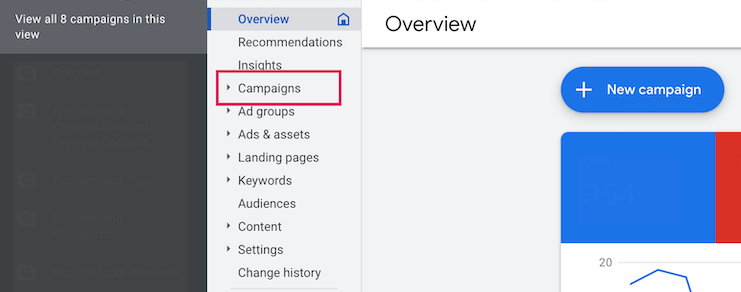
Step 2: Navigate to the Ads Menu
Select “Ads & assets” from the drop-down menu on the left side of your screen.
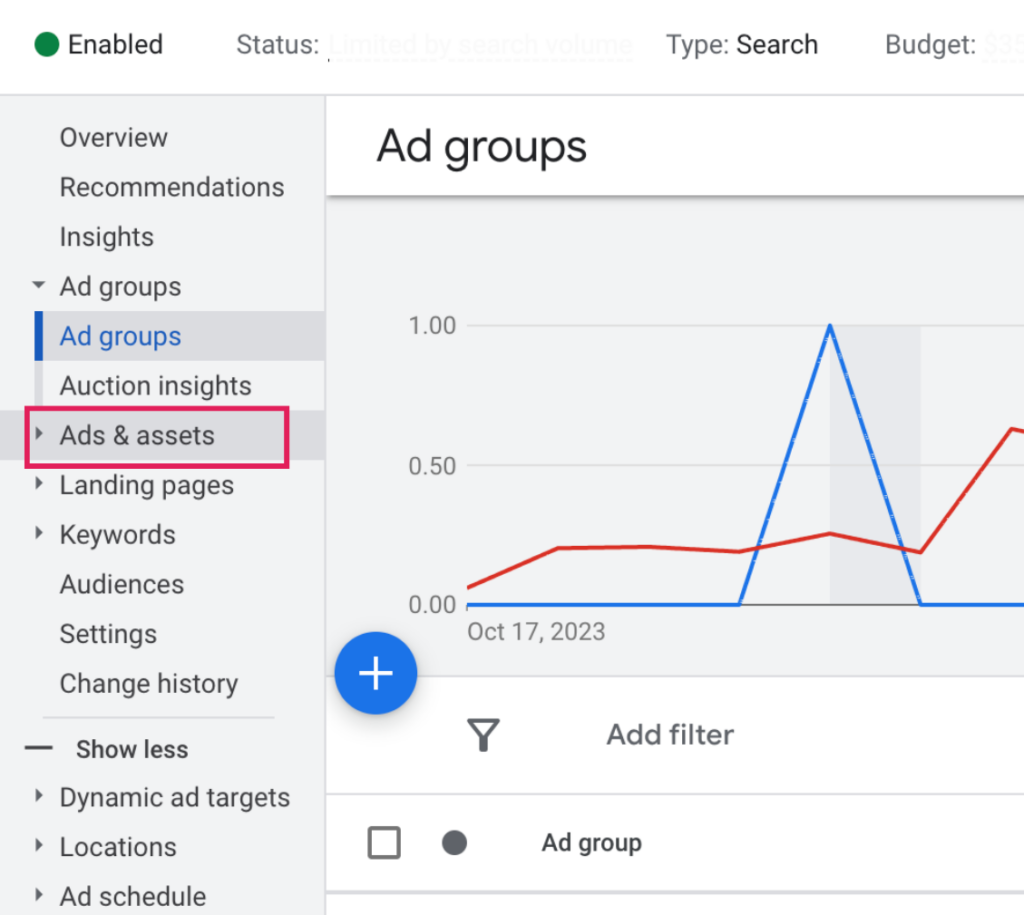
Step 3: Create New Ad
Click the + button on the top left of your screen and select “Responsive Search Ad.”
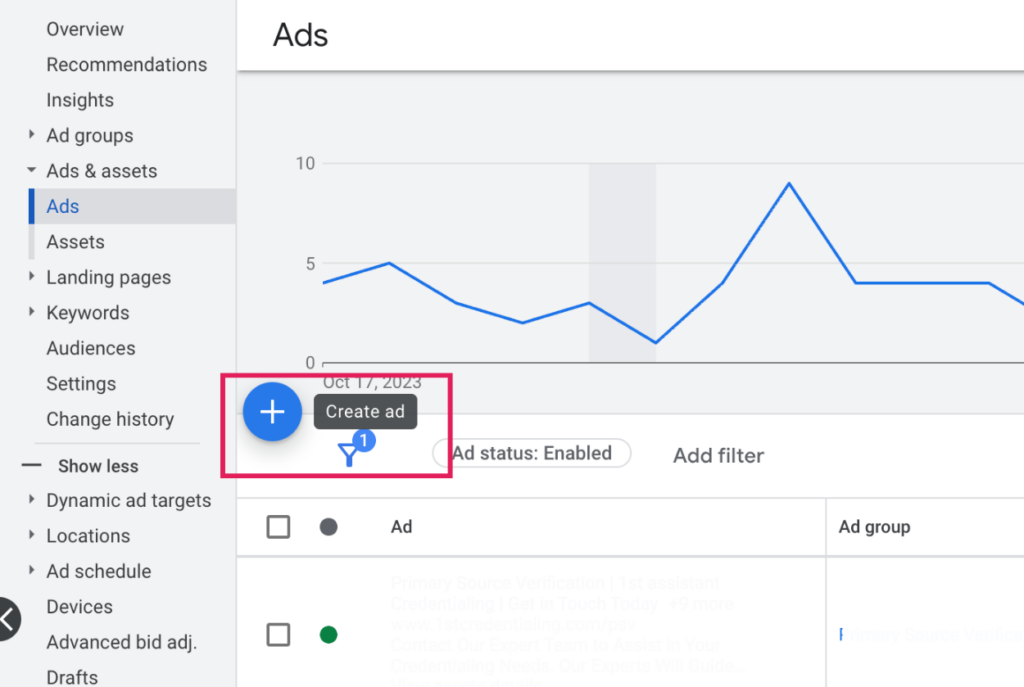
Step 4: Add Final URL and Display Path
Add your final URL and decide how your display path will read.
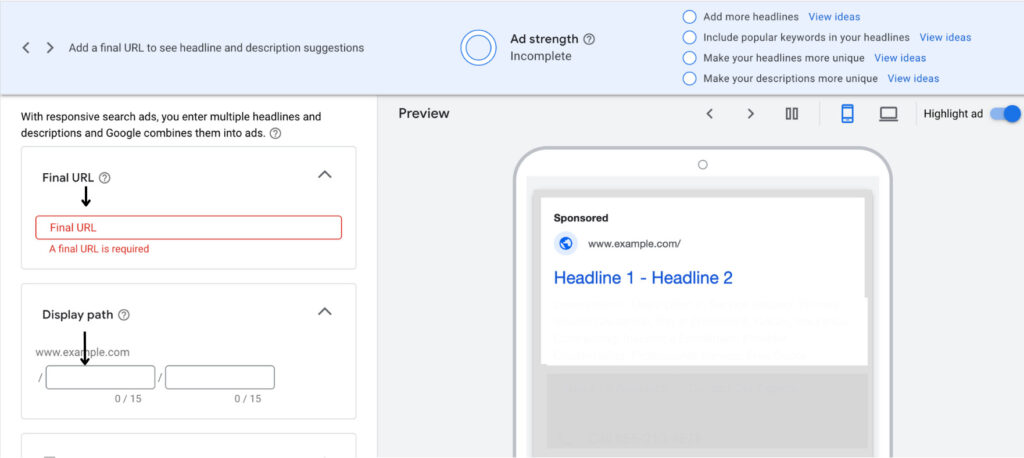
Step 5: Add Headlines
Add your headlines. Google will prompt you to add a minimum of three headlines, no longer than 30 characters each, but try to add as many as possible to improve ad rank.
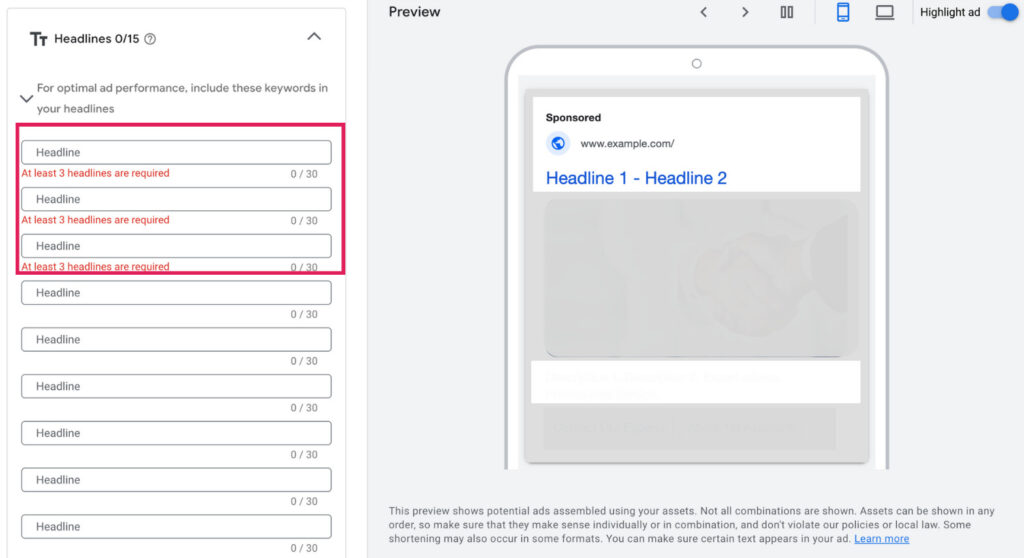
Step 6: Add Descriptions
Add your descriptions. Google will prompt you to add at least two descriptions, no longer than 90 characters each, but try to add as many as possible to improve ad rank.
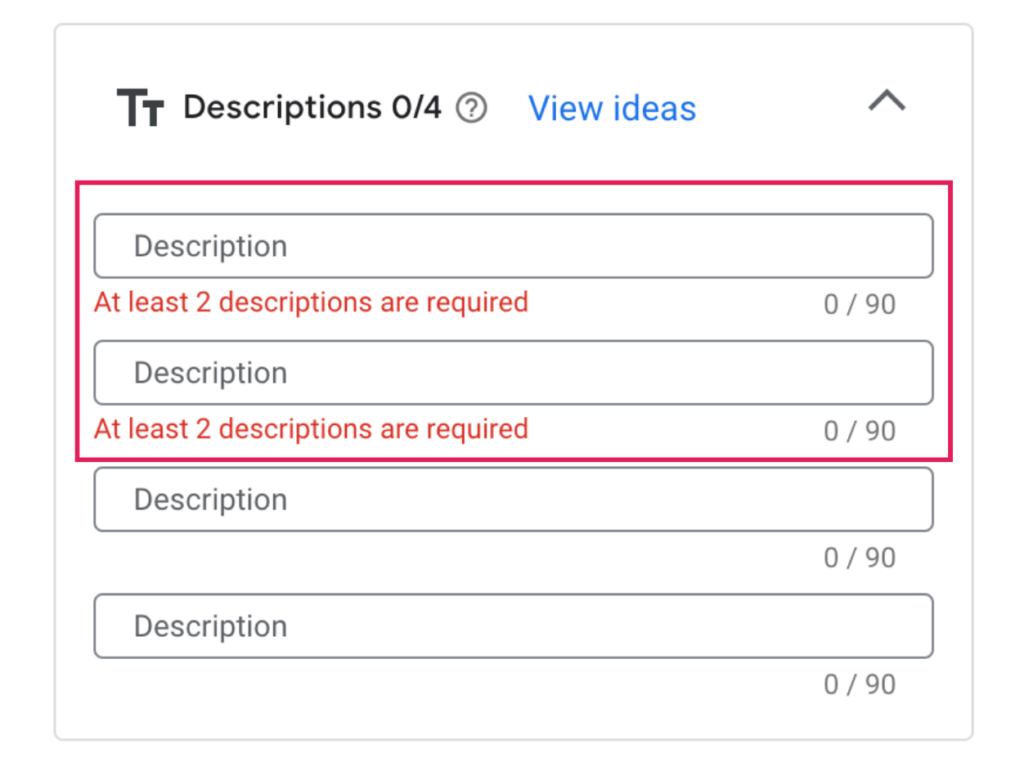
Step 7: Save Ad
Click “Save ad,” and your ad will appear in your selected campaign!
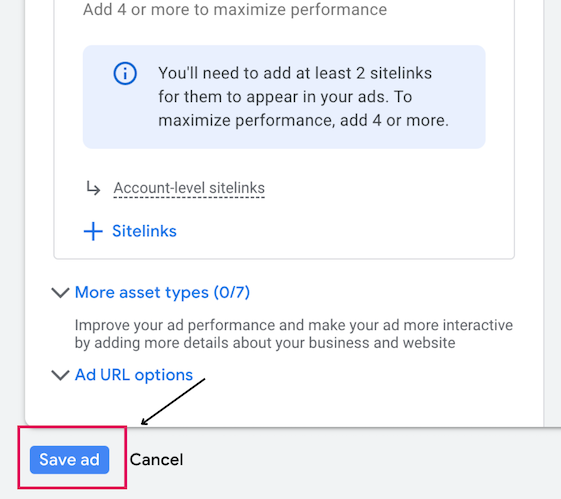
Writing Effective Search Ads
Making sure to follow a few best practices when putting together your text ads will go a long way in having a presentable ad that draws the customer’s eye to drive click-through rates.
For an in-depth look at ad copy, check out our keys to writing great ad copy here.
Once your ads are written and implemented into your ad groups, we can turn our attention to ad extensions, which provide an additional way to use information and links within your Google Ads ad.
Search Ad Headlines
Basic requirements for RSA headlines:
- 30 characters maximum
- Free of any punctuation
- Must include three options
Tips for writing RSA headlines:
- Incorporate your keywords in the ad copy.
- Call out unique selling points of your product or service.
- Use title case.
- Include a call to action like “Contact Today,” “Buy Now,” or “Learn More.”
- Continue to optimize and test new copy.
Search Ad Descriptions
Basic requirements for RSA descriptions:
- 90 characters maximum
- Include proper punctuation
- Must include at least two options
Tips for writing RSA descriptions:
- Utilize as much of the character limit as possible to take up visual space on the SERP.
- Write your descriptions in sentence case.
- Maintain relevance to your headlines and keywords.
- Use persuasive language when possible.
Responsive Search Ad Example
Below is an example of an RSA that employs the above-mentioned tips. It’s an example of a non-branded ad in a leek-centered ad group for the fictional “Warheim Farms.”

As you can see, even this random combination of ad copy used in this preview includes callouts of unique selling points (i.e., “fresh and flavorful”), the headlines are in title case, the descriptions are in sentence case, and there are both calls to action and persuasive language in both the headlines and descriptions.
5 RSA Best Practices
It’s good to remember that RSAs thrive on flexibility and regular adjustments based on user data. Be sure to regularly update and test different combinations while keeping an eye on performance metrics and making necessary changes.
By following these best practices, you can harness the full potential of Responsive Search Ads and elevate your advertising strategy.
1. Utilize Multiple Headlines and Descriptions
Take full advantage of the flexibility RSAs offer by providing a diverse set of headlines and descriptions. Aim for at least 3-4 unique headlines and 2-3 distinct descriptions. This variety allows Google’s algorithm to dynamically test different combinations, increasing the chances of your ad resonating with a broad audience.
2. Highlight Unique Selling Points (USPs)
Ensure that your RSAs communicate your product or service’s key differentiators and unique selling points. Whether it’s free shipping, a special discount, or exclusive features, incorporating USPs into your headlines and descriptions can capture users’ attention and set your ad apart from the competition.
3. Optimize for Ad Strength
Leverage Google Ads’ Ad Strength feature to assess the effectiveness of your RSAs. Ad Strength provides real-time feedback on the quality and diversity of your ad content. Aim for a high ad strength to ensure that your ads are compelling and likely to perform well.
4. Regularly Review Performance Data
Keep a close eye on the performance metrics of your RSAs. Identify high-performing combinations and use this data to refine your ad content. Regular reviews help you understand which headlines and descriptions resonate most with your audience, allowing you to optimize for better results.
5. Create Relevant, Targeted Content
Tailor your RSAs to match the specific intent of user queries. Use keywords strategically in your headlines and descriptions to enhance relevance. The more closely your ad aligns with what users are searching for, the higher the likelihood of clicks and conversions.
Check Out the Rest of Our 6-Part Series
Be sure to check out the rest of Portent’s 6-part series on PPC Marketing for helpful industry insights and guidance on getting started with PPC strategy.
Check out the rest of the six-part series:
PRIMER: What is PPC – Pay Per Click Marketing Explained
PART 1: Structuring Your Google Ads Account
PART 2: Understanding Campaign Settings
PART 3: Researching Keywords
PART 4: How to Create Effective Responsive Search Ads
PART 5: The Best Google Ads Extensions to Implement
PART 6: Tracking Success









